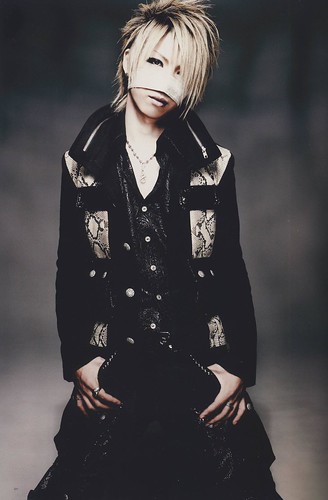Charles Bernstein has been a central figure in the poetry debates in the U.S. over the last thirty years. Often associated with the Language poets, he has written poetry, theory, librettos, and reviews. Over his career, he has experimented with different techniques in poetry and different mediums, such as sound. Early in his career, he was considered an outsider, an anti-poet of sorts, but his work has gained acceptance, as can be seen by the recent publication of his selected poems, All the Whiskey in Heaven, by Farrar, Straus and Giroux, and the debate that centered around his work and that of other Language poets has largely died down, though, as can be seen in several articles in this collection, critics are still trying to figure out how a poet who takes a stance against the “Official Verse Culture” fits into the American poetry scene.
Bernstein’s early poetic work plays with meaning in language. He reworks syntax, challenges the notion of an authorial voice, deconstructs the reading experience, and in general upsets preconceived notions of how language signifies. It uses a variety of techniques to achieve this disorientation or deconstruction, such as using indeterminacy, abstraction, parataxis, avoiding closure, being non-representation, using fragmentation, and being poly-referential. It does not allow you to sit back and accept a standard narrative. At the same time that he was writing such poetry, he was working on theory articles and fostering a poetic community by publishing others’ works, by teaching, and by reading. His practice helped create a space for poetry outside ofany use value, of which it has little under capitalism, and helped offer poetry as a space where the individual, not the collective, was important. His outreach projects influenced many poets, and many of his students followed his example and created presses and reading venues themselves; thus, his influence has spread widely over the U.S. poetry scene.
Over the years, his poetry has changed significantly, so much so that a book like Girly Man seems to rely on humor and accessibility. Still, his themes of making a space for the individual in an consumer based society, of the importance of poetry for intellectual life, of the need to challenge mainstream thinking and power—these themes are still apparent, as are humor and playful techniques. As a whole, the process of writing poetry is more significant for Bernstein than the actual outcome, for the process itself makes one question preconceived notions, preconceived language, or deceptive language. The process of poetry helps make one an individual, but the process of reading Bernstein’s work also pushes one to rethink ideas and words.
Bernstein grew up in New York. He attended Harvard and studied philosophy and avant-garde literature, working on writers like Ludwig Wittgenstein under the direction of Stanley Cavell. Years after graduating, he and Bruce Andrews started the L=A=N=G=U=A=G=E magazine, which was a starting point of the Language poetry movement, a loose group with similar poetic penchants that includes such writers as Ron Silliman, Lyn Hejinian, Barrett Watten, Ron Silliman, Michael Palmer, and Susan Howe, among others. After years of working in the business world, Bernstein became a professor at the University at Buffalo, where he co-founded the Electronic Poetry Center, a web site that lists resources for innovative poetry. He has since become a professor at the University of Pennsylvania, where he has co-founded PennSound, an extensive online library for poetry and poetry related sound files.
Many articles have been written about Bernstein’s works, and his poetry and his theory have been the subject of several dissertations; still, this collection is the first to collect a wide variety of views on his work in book form. Part of the motivation for collecting all of the pieces in this work is to give an overall view of his career, not just one or two aspects. Up to now, his theoretical articles have received more published attention than his poetry, but the writers in this collection deal with a wide variety of topics related to his work and treat his poetry, theory, pedagogy, sound projects, and influences. The book also includes poetic reactions to his work from friends to students to just poets, and the poetic responses come from writers ranging in ages.
The collection starts with a nice introduction to Bernstein’s work by the Caroline Bergvall that is useful both to the first time reader of Bernstein’s work as well as to long time followers. Coming from a British poet, it represents an aspect of Bernstein’s international interests, an interest that has become more pronounced in recent years with his working with poets from many countries, from Italy to China to Brazil. In fact, he current directs Sibila, a journal based in Brazil, with Régis Bonvicino, and in the past four years alone, he has given lectures outside of the U.S. in Korea, Denmark, France, Portugal, Canada, Britain, Sweden, China, and Finland.
The other articles in the book cover his major influences like Wittgenstein, Marx, Brecht, Stein and compares his ideas to those of others, like Baudrillard. The articles examine his outsider status and explore his use of poetic techniques like poly-referentiality, anti-absorption, and defamilirization. The authors examine his use of sound, explore changes in his work, look at this composition theory, and examine his poetics in relation to reader response theory.
For example, Kimberly Lamm discusses the influence of Gertrude Stein on Bernstein’s work, claiming that Stein’s work pushed him to explore the way identity is retained in language and to critique ideas of masculinity. Lamm argues that Stein’s works do not allow one to use contemporary notions of identity, and her works provided a starting point for Bernstein since much of his work explores identity as a social construct, one which he tries to deconstruct in his early work by writing against authorial voice.
Discussing similar ideas, Thomas Fink argues that Bernstein uses the list poem to complicate single perspectives by providing a large number of competing perspectives or objective perspectives that do not seem so objective. Fink explores a variety of list poems in which the lists deal with war, poetic fashions, and cultural correctness. Fink suggests that Bernstein complicates the way the reader sees the identity of the poet, but he also claims that Bernstein is pointing with the list poem to the myriad poetic selves that a poet uses, has to use, because of the nature of language. In other words, numerous discourses occur in any given poem, acknowledged or not, and Bernstein points that out in his work.
This idea of multiple voices is explored further in Steve Salmoni’s article, for he explores the shadow of Shadowtime partially by examining the legacy of Benjamin in Shadowtime and in Bernstein’s work as a whole. In this exploration, he shows the way the shadow can be other texts (literary, social, and/or political) behind one’s text and the way in which those things intrude or condition the text. Ultimately, Salmoni see the shadows as a connective device constructed in a non-productive way to show us language as constructed.
Michael Angelo Tata picks up this theme by looking at Bernstein’s pointing to the myriad voices in language, but he examines Bernstein’s use of language as open allowing for direction/misdirection and multi-referentiality and how this aspect of his work grounds it and makes it more politically useful. Like Salomi and Fink, he focuses on Bernstein’s ideas of language, but he examines how Wittgenstein’s work provides a theoretical background to Bernstein’s ideas.
Tim Peterson’s article also discusses the political nature of Bernstein’s poetry, but Peterson tackles the question of change in Bernstein’s work from the early poems to the more recent ones. He compares Bernstein’s defamiliarization, fragmentation, and general anti-absorptive techniques to those of Berthold Brecht. He then goes on to ask how one reconciles the commodified self of the early work with the clear self of Girly Man. He argues that Bernstein complicates the self of Girly Man by giving us a divided self who embraces similar liberatory strategies as the GLBTQ community. Bernstein has essentially taken Schwarzenegger’s girlie-man slur of the Democrats as a rally cry after 9-11 for responding to co-opted language.
In a related argument, Carlos Gallego explores the function of anti-absorption in Bernstein’s work, how it both pushes the reader back from normative thought patterns and pulls the reader into the alternative patterns of the poem. Gallego argues thatwith his focus on materiality Bernstein forces us away from abstraction and back to the real world and that this make us realize our individual importance. In his discussion, Gallego ties Bernstein’s thought to both Marx and Wittgenstein.
Paul Stephens turns away from these two influences to explore the idea of the sophist in Bernstein’s work. He suggests the sophist makes us questions sincerity and irony and how Bernstein’s use of the sophisthelp explain his idea community/uncommunity for Language poets. Stephens pays close attentions to Bernstein’s use of irony and contrasts it with writers like Richard Rorty and Hegel and argues that Bernstein’s irony is rhetorical and that it shows his writing as being embedded in larger language networks.
Like Peterson, Megan Jewell startsout with a discussion of Bernstein’s place as an insider and outsider in academia, but then she takes a different direction than the other writers by looking at Bernstein’s compositional theories related to Composition Studies as taught in the U.S. She argues that Bernstein stresses situational reading strategies and that his stress is similar to that of recent composition theorists like Gerald Graff. She also argues that his push against a normative I, as in The Sophist, is similar to contextual reading in the academy and that his innovative pedagogy is connected to his poetry practice, suggesting that Bernstein sees the process of questioning literary practices in all aspects of his life as important.
Also quite different than the other writers, Michael Hennessey explores Bernstein’s interest in sound and recording by discussing his early work Class. Hennessey provides close readings of each track, focusing on the techniques of recording/composition. He argues that Bernstein’s early work in sound experimentation sets the foundation for his poetic later and for his recording projects, such as the reading series and PENN sound.
The other articles in the book cover equally fascinating topics, such as the relation of Bernstein’s poetry to conceptual art in Allen Fisher’s article, the argument in Peter Monacell’s article that Bernstein’s work is firmly anti-suburban in nature, or the close look at visual poetic strategies that occurs in James Shiver’s article. Overall, among the twenty-five writers in this book, they cover the most often debated aspects of Bernstein’s work, and hopefully the publication of the book will help deepen the discussion around his work, especially his poetry.
Lastly, for me beyond the joy of seeing so many articles on Bernstein’s work come to publication, I consider this book as a tribute to one of my own influences. I came upon Charles Bernstein’s work rather haphazardly when scanning the book stacks in the LSU library during my graduate school years. At that point, I knew the Modernists and some of the first Post-Modernists, but I did not know many names in the innovative American tradition. They were not being sold in bookstores in the South, and one could only get them from a small press or a library that paid attention to the small press world. His slender early poetry volumes lead me to his theory, and from there, I became enamored of the innovative tradition in American writing and steered my own poetry and criticism in that direction. Since then, I have talked to many poets who have similar stories, so I see this book in many ways as a response like all the individual responses contained within it.
[The Salt Companion to Charles Bernstein is scheduled for publication by Salt Publishing in summer of 2012.]
[The Salt Companion to Charles Bernstein is scheduled for publication by Salt Publishing in summer of 2012.]






























